I have been milking Audrey loyally everyday, three times a day now for about a month. We have developed a nice little routine that I truly enjoy and look forward to. I bounce out of bed first thing anxious to get down to the barn, and am chomping at the bit to get started in the evening. It may lose that new feeling after a while, but that whole fresh milk everyday part will never get old.
When you first start milking a new dairy goat or cow, it can be stressful. You may have issues with them being uncooperative, or you fear did I milk them enough? Am I taking the proper precautions? You don’t want to inadvertently cause production to drop by not emptying their udder, and of course mastitis is always a concern. Because we drink our milk raw, sanitation in the process is of the upmost importance because I don’t have pasteurization as a safeguard. I have to prevent it from getting into the process in the first place, and this is where a routine comes in very handy. If you take the necessary steps and precautions everyday, two or three times a day, it becomes muscle memory and eventually you don’t even have to think about what you’re doing. The routine becomes second nature, and I take comfort knowing I can safely drink my raw milk, while doing everything possible to keep up maximum production and Audrey healthy.
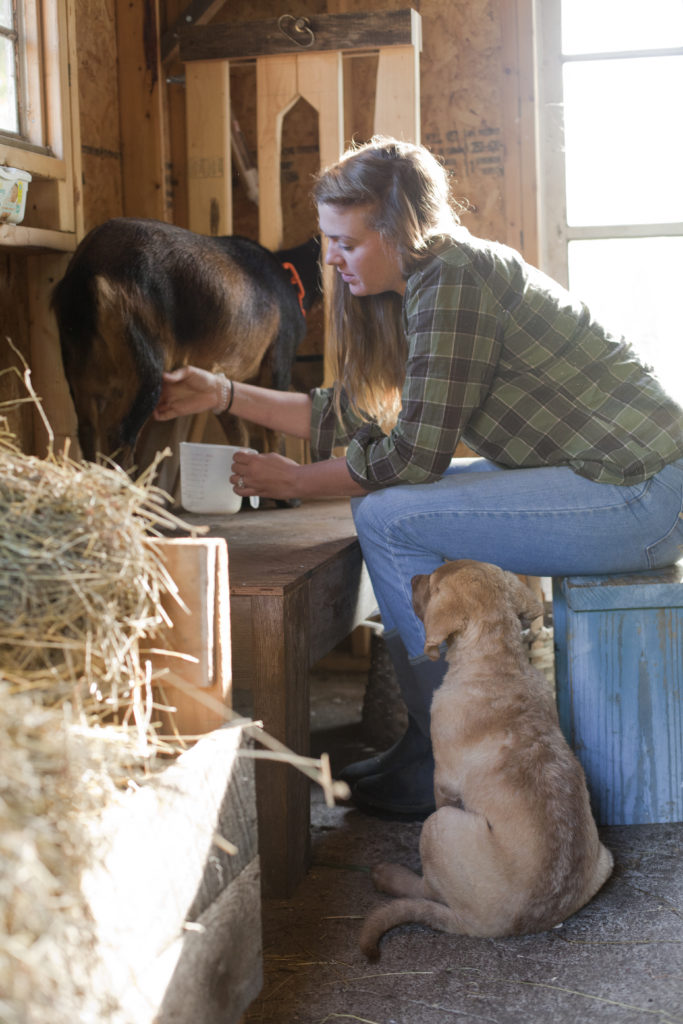
What's in My Basket?
First Things First
Cleanliness. Now it’s no secret to anyone that knows me personally that I am a bit of a neat freak. Well, let’s just say it doesn’t stop at the house. My barn is always swept and tidied up before I head out after I’m doing doing whatever it is i’m doing in there. I always sweep after I milk, never before. Why? Because sweeping up dirt that’s tracked in, hay, and general dust kicks it up into the air and I don’t want that actively floating around while I’m getting my milk on and having it settle in my fresh supply. This may seem a little nuts to some, but here’s a tip….I am nuts! I also always wipe down my milk stand after I milk because well, that just makes sense.
My Routine
So, I go down to the barn, milk stand is clean, and the floors are swept. I turn on my tunes to set the mood and grab Audrey and get her on the stand. While she is munching away, I wipe the bottom of her hooves to remove any poop or hay that may be stuck on. I then wipe down her teats and udder very well with baby wipes to again remove any dirt, debris, etc she’s picked up while laying down. Then I grab a clean baby wipe and give my hands a good cleaning as well. After everything is cleaned properly, I give her a few squirts out of each teat onto the stand.
Now, some people say you have to use a “strip cup” specifically for this, or they use a paper towel. But, my stand is built out of wood, so I can see the milk clear as day on my solid base. The purpose of this is to clear out the teats of any clogs or debris that could have made its way up there, surface bacteria, and identify any blood or issues with the milk itself.
Once she has had a few good cleansing squirts, the milking game begins. Because she has such a tight udder and small teats, I start her off with the hand milker. In addition to getting a lot of milk out quickly, it helps loosen everything up and allows me to easily finish her off with hand milking. This makes for a better experience for her as well as speeding up the process. I frequently dump the milk from my measuring cup into the mason jar secured with a lid. Even the best behaved goats on the stand will let out an unexpected kick and it is a tragedy when the milk falls victim. Whoever said there’s no sense in crying over spilled milk clearly never milked an animal in their life. If she does manage to kick it over or get a foot in it, because I frequently dump, I’m only losing a little as opposed to half a day’s supply.
After she has been milked out, I give her a few good bumps of the udder to let down any milk she’s holding back from me. Emptying her udder fully at each milking will stimulate more production, while also keeping mastitis at bay. After finishing, I wipe her udder and teats down again with baby wipes, then give her a good spray with Fight Bac on each teat for extra insurance against mastitis. If she is still interested in eating, I let her hang out and nibble on grain until she loses interest and gets antsy and let her back in with her friends. I then let the cleanup crew in (read Annie) to clean up any of the overshot milk before I spray and wipe it down with my essential oil and ACV cleaner. After its been given a thorough cleaning, I collect my supplies and sweep up so everything is clean and ready for the next milking.
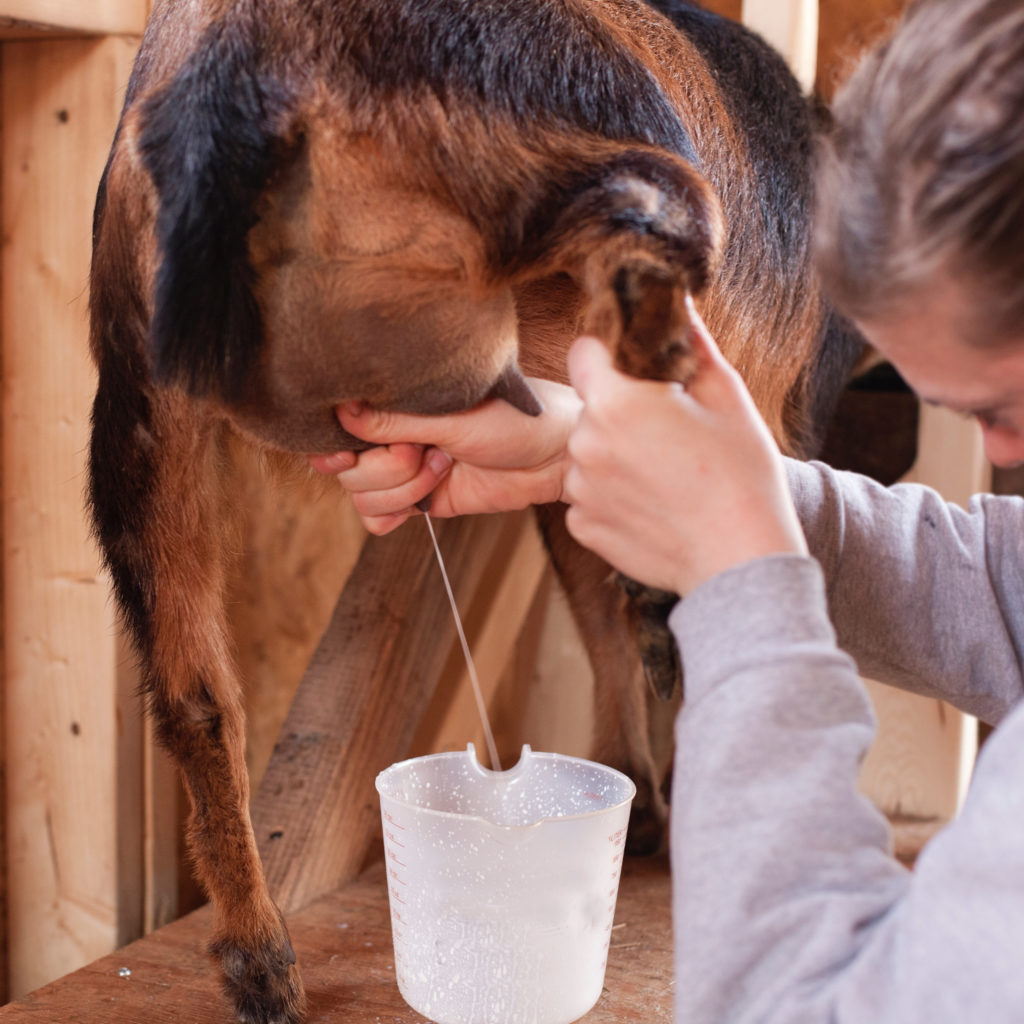
I hustle back to the house as quickly as possible to get the milk filtered through a mesh coffee filter into a jar. This catches any hair (it’s unavoidable) as well as anything else that has fallen into the milk and strains it out. It gets tucked in the fridge towards the back. Not only is fresh milk best serviced iced cold because it’s delicious, but it is also ideal conditions to keep bacteria levels from getting out of control. Again, the milk is raw, so all bacteria is left in tact!
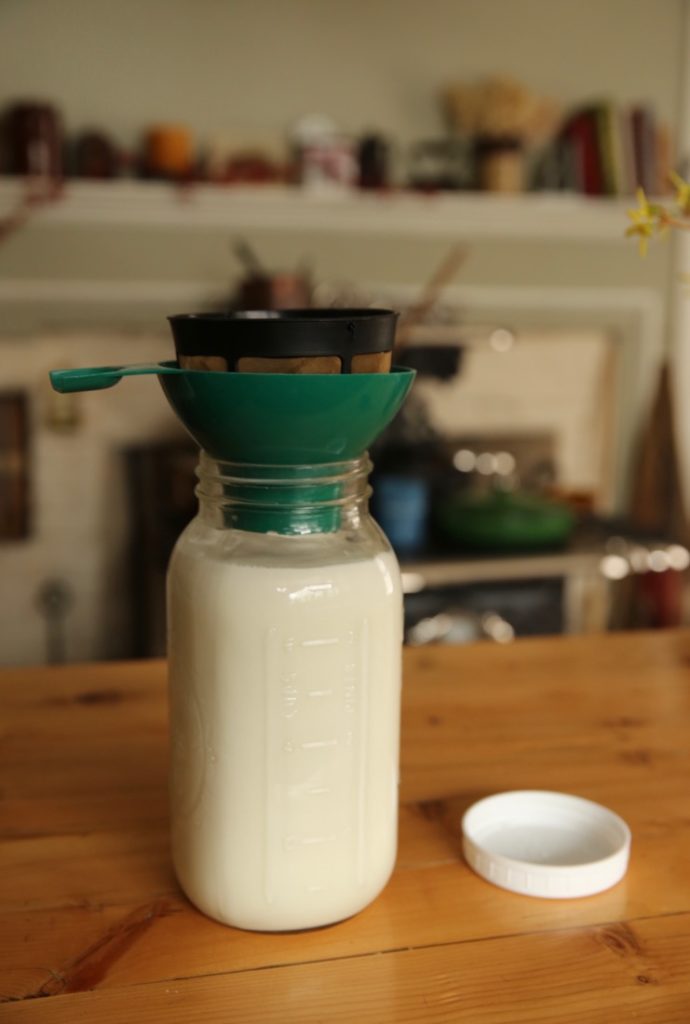
I was taught how to milk by my friend Angela, whom I also got Ruby, Audrey, and Allison from. This routine has proven to work well for her over the years, and so far it has for me as well. Audrey has given me delicious raw milk that I have had no hesitation in drinking because I know it has been milked in clean conditions, and produced by a healthy goat given the utmost care and highest quality non-gmo/soy free/organic feed. Routine is good. Not only for me, where by through repetition the process is improved and becomes second nature, but for her as well. She knows what to expect, what’s coming next, and is learning to go with the flow and be more at ease. Do you have a milking routine? What works well for you?
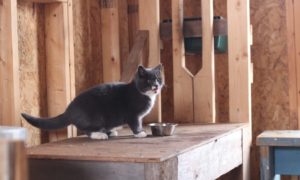
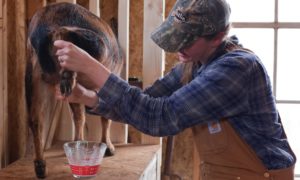
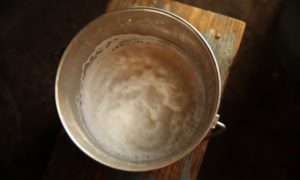
Pingback: Milking an Unruly Goat – The Modern Day Settler
Hi! I started following you on instagram and fell in love with your account. Checking out your blog for the first time and the content is just as good as IG 🙂 Question: How long will Audrey produce milk for? Once a goat has kids, do they continue to produce as long as you stimulate production?
Also, how much milk do you get per day? And why is Audrey the only goat that is milked? Are your other goats males?
Best,
Alex
Hi Alex!
I’m so glad you found me and you enjoy! 🙂 Some of the questions you asked do vary depending on the particular goat/breed but generally speaking: a goat will produce milk for around 9 months or so because of human interaction. Around here kids are born typically early spring, and they are milked all the way through they are rebred in the fall and then they are “dried off” early winter so their bodies can focus on baby development. Their lactation cycle naturally increases as the kids are nursing and growing to supply their demand and then yes you essentially stimulate the production once the babies are weaned. But, some goats just are really consistent producers and if they aren’t rebred the same year they kidded, can produce for quite a long time. One of my friends has a ND goat that she milked for 2 years straight! But a lot of goats would just naturally dry off. So, it depends on the goat itself as well as if they are being bred back or not.
Audrey produced a quart of a milk a day. She is not the only goat I milked, just happened to be the only one in milk when I originally wrote that post. I had another doe that I started milking in June and she too produced a quart a day. This year Audrey and my Nubian Ruby are pregnant so I can expect a quart from Audrey and over a gallon a day from Ruby! I have three does (1 didn’t take this year), a buck, and a wether!
Pingback: What You Should Know Before Getting Goats | The Modern Day Settler
I’m looking into getting a goat or two… And I’m curious if I start milking them how.often do I need to milk them? If I start is there a certain time frame I have untill I can’t anymore? Does the doe have to of been pregnant before you can milk?
Hi Jess! So, it all depends on if you decide to retain a baby or not. If you do, you will likely only be able to get one good milking in (morning) and at night you won’t get much as the baby has been able to nurse throughout the day unless the mother self weans. I milk morning and night, and the lactation length can greatly vary goat to goat. I have a friend who milked her ND for 2 years straight because she wouldn’t dry off. Most people will kid and continue to milk through being rebred and dry off a couple months before their next kidding. And yes, the only way to get milk from an animal is for them to have a baby!
I just found you page and I have a few questions. I too am a huge fan of milking goats. I have 15 in my herd. I own Lamanchas. If I read correctly you are not using a iodine teat dip? I was told by the person I buy my goats from and my son that works at a dairy the steps for milking go as is: dip the teat, strip the milk from the teat, dip the teat again with the iodine teat dip, let sit on teat for 1 minute, wipe the teat off with clean towel then you can start your milking. After completion of milking you must dip the teat again in the iodine teat dip and just let it air dry. I have never had mastitis in my herd.
I am not using an iodine teat dip but certainly have heard of people using it. I use “Fight Bac” spray, I believe it is linked in the blog post. It is used to prevent mastitis. I have never had an issue.
Pingback: Goat's Milk Mozzarella - The Modern Day Settler